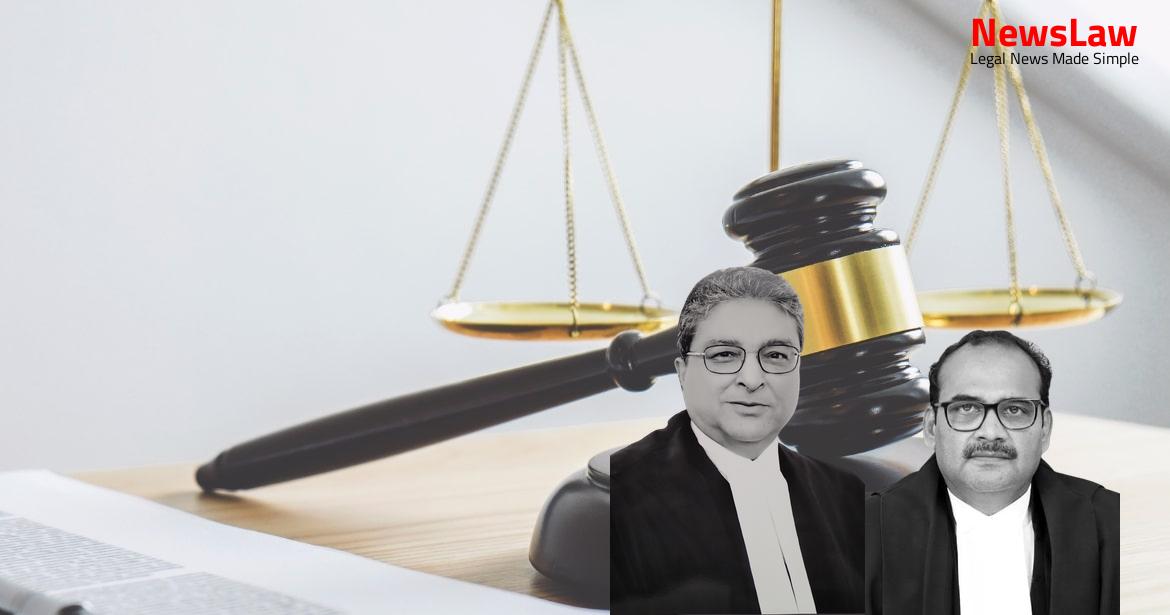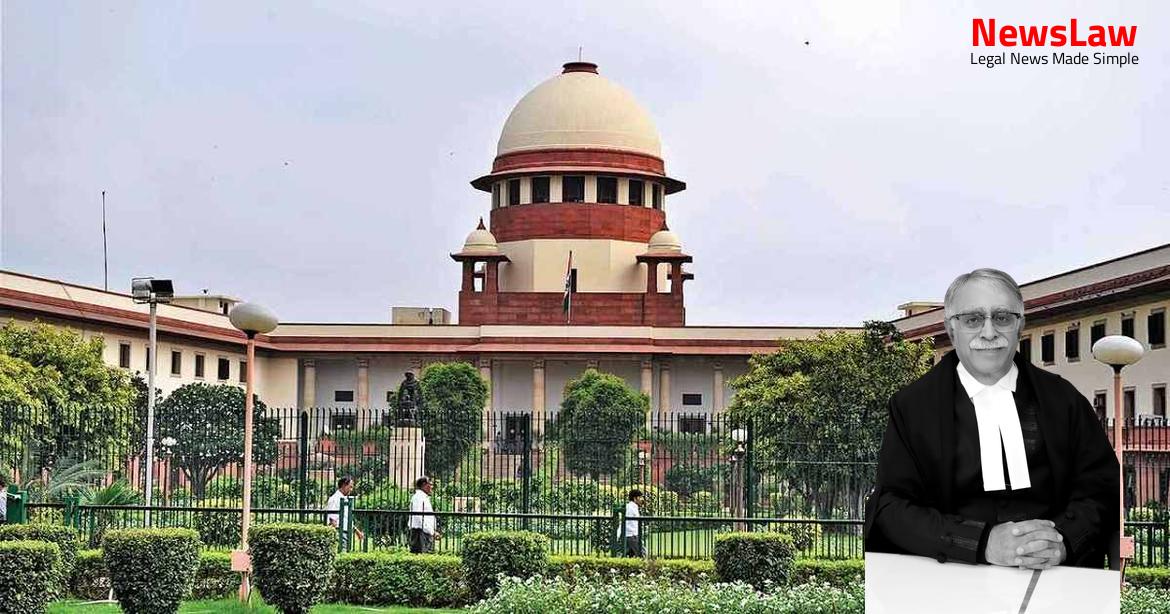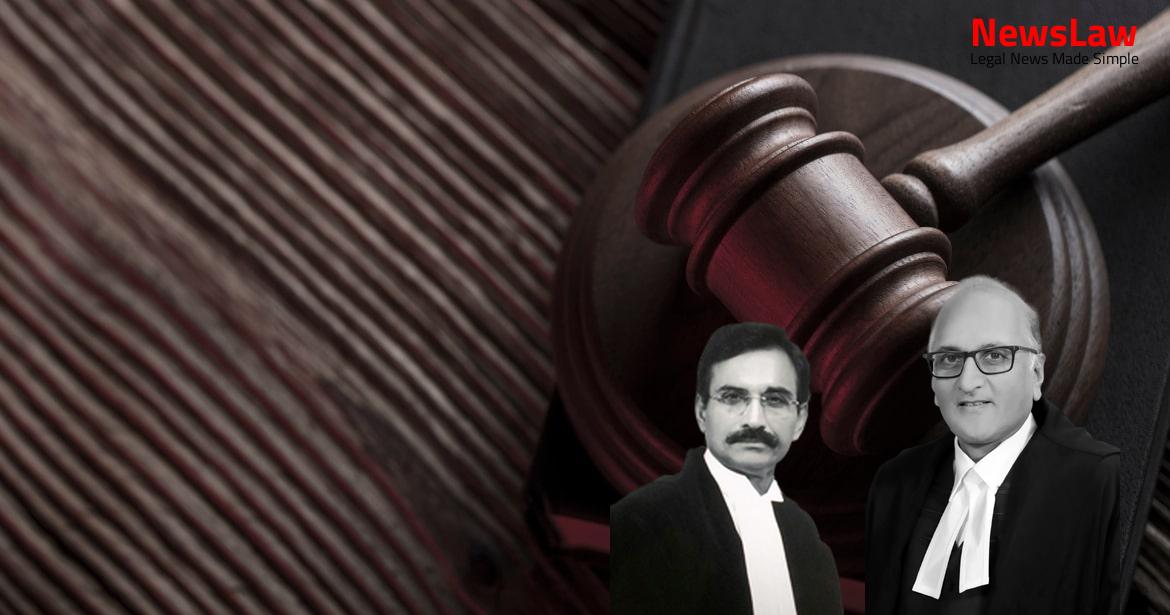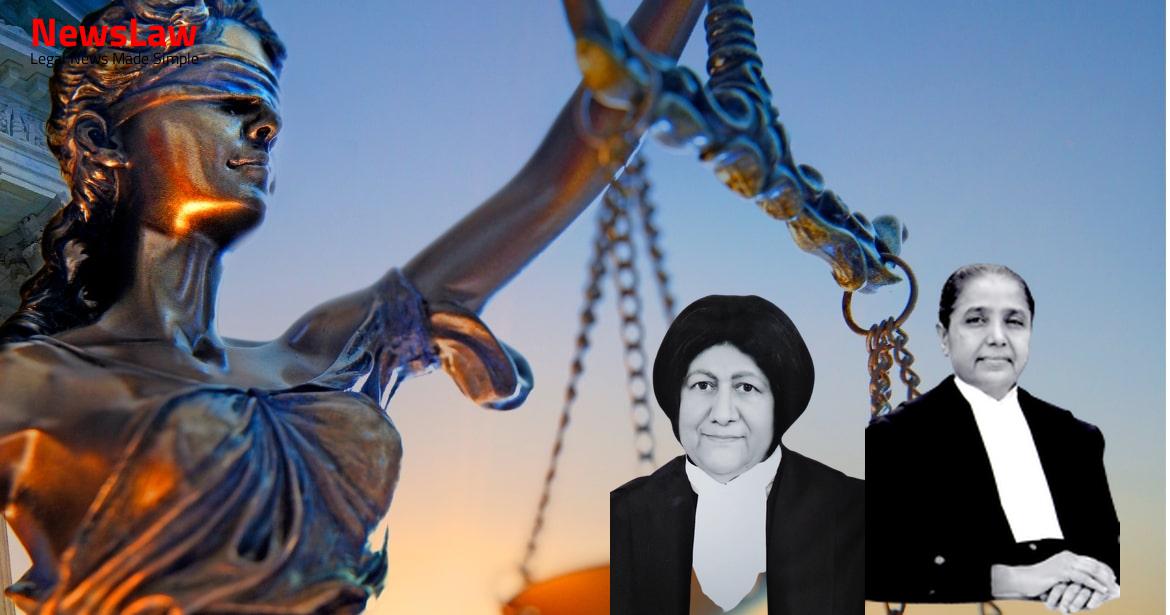Explore the intricacies of relying on circumstantial evidence in criminal proceedings as emphasized by recent court analysis. The case underscores the significance of concrete proof in establishing guilt, challenging traditional notions of relying solely on circumstantial evidence. Follow along to unravel the complexities of legal reasoning in the criminal justice system.
Facts
- A2, who was 25/26 years old at the time, committed the murder of two children by strangulation.
- The prosecution established A2’s motive to eliminate the children due to his love for A1.
- Evidence supported the close intimacy between A1 and A2, leading to the crime.
- High Court upheld A2’s conviction based on circumstantial evidence and recovery of incriminating items.
- A2’s appeal partly allowed, death penalty set aside, and sentenced to 20 years of rigorous imprisonment under Section 302 IPC.
- Complainant Rakesh Kumar reported his two sons, Aman Kumar and Om, missing on 24.09.2009
- Accused Anita alias Arti, Ravinder Singh alias Kaku, and Ranjit Kumar Gupta were implicated under Sections 302/364/506 read with Section 120-B IPC
- Sanju, wife of Ranjit Kumar Gupta, was initially placed in column No.2 of the report under Section 173 Cr.P.C.
- Bodies of the missing children were discovered on 25.09.2009 in a paddy field
- Accused Anita alias Arti, Ravinder Singh alias Kaku, and Ranjit Kumar Gupta were charged and pleaded not guilty
Also Read: Land Compensation Dispute: Legal Analysis
Arguments
- The learned counsel of the appellant argued that the conviction of A2 cannot be upheld based solely on the establishment of a motive through call records.
- The argument implies that the prosecution has not presented sufficient evidence beyond call records to support the conviction of A2.
- This suggests a key contention regarding the reliance on call records as the primary basis for establishing motive and subsequently, the guilt of A2.
- The appellant’s defense seems to challenge the adequacy and reliability of call records as the sole determinant of guilt in this case.
Also Read: Legal Analysis: Exoneration in PMLA Case
Analysis
- The prosecution’s case against A2 lacks conclusive evidence to establish guilt beyond a reasonable doubt.
- The evidence presented, including recovery of bags and materials, arrest, call details, and last seen theory, fails to conclusively link A2 to the crime.
- Inconsistencies and contradictions in testimonies weaken the prosecution’s narrative and make the conviction of A2 questionable.
- The motive for the alleged murder, rooted in an alleged intimacy between A2 and A1, lacks direct evidence for substantiation.
- The High Court’s conclusions based on call records and alleged intimacy are deemed as erroneous extrapolation without concrete evidence.
- Extra judicial confessions were rightly rejected due to inconsistencies.
- Failure to adhere to Section 65B(4) requirements for secondary evidence presentation was noted.
- Inconsistencies in testimonies of PW6 and PW7 were not adequately addressed by the High Court, weakening the case against A2.
- Dubious inferences drawn by the High Court from call records were unfounded and lacked concrete evidence.
- The supposed motive of the crime being related to the proximity between A1 and A2 is not conclusively established.
- The evidence presented falls short in proving that the murder was connected to the alleged relationship between A1 and A2.
- Anvar P.V. (supra) clarified by the court as the law declared on Section 65B of the Evidence Act.
- The judgment in Tomaso Bruno (supra) is considered per incuriam and does not lay down the law correctly.
- Holding otherwise would render Section 65B(4) otiose and inconsistent with the innocence of the accused.
- Citations of previous cases emphasizing that in circumstantial evidence cases, guilt can only be inferred when all incriminating facts are incompatible with the innocence of the accused.
- References to cases such as Bhagat Ram v. State of Punjab and C. Chenga Reddy v. State of A.P. on the requirements for drawing an inference of guilt from circumstantial evidence.
- Overruling of the judgments in Shafhi Mohammad and dated 03.04.2018 for not laying down the law correctly.
- Explanation on how electronic evidence must comply with certification requirements under Section 65B for admissibility.
- Application of the principle in Taylor v. Taylor in judgments of the court.
- Anvar P.V. vs P.K. Basheer & Ors (2014) 10 SCC 473 raised the question of admissibility of call records under sections 65A and 65B of the Indian Evidence Act.
- Uncertainty existed regarding the applicability of Anvar P.V. vs P.K. Basheer & Ors and Shafhi Mohammad v. State of Himachal Pradesh (2018) 2 SCC 801 in this area of law.
- The matter was conclusively settled in Arjun Panditrao Khotkar vs Kailash Kushanrao Gorantyal (2020) 7 SCC 1 by the court’s judgment on 14/07/2020.
- The court affirmed that the certificate under Section 65B(4) is a prerequisite for admitting electronic evidence, as established in Anvar P.V. and disagreed with the interpretation in Shafhi Mohammed.
- Oral evidence cannot substitute the mandatory requirement of Section 65B(4) for electronic evidence
- The tripod stand of motive, last seen theory, and recovery is found to be non-conclusive
- Evidence supporting the conviction of A2 is marred with inconsistencies and contradictions
- Sustain a conviction solely on circumstantial evidence is not possible
- Appeal filed by A2 is allowed, High Court’s order convicting A2 under section 302 and 364 of IPC is set aside
- Conviction of A2 is set aside
Also Read: Judicial Scrutiny of Bidding Process and Contractual Obligations
Decision
- Acquittal of A1 and A3 upheld
- No order as to costs
- Criminal Appeal Nos. 1308-1311 of 2019 dismissed
- Ravinder Singh (A2) to be immediately set at liberty unless needed in another case
Case Title: RAVINDER SINGH @ KAKU Vs. THE STATE OF PUNJAB (2022 INSC 505)
Case Number: Crl.A. No.-001307-001307 / 2019



